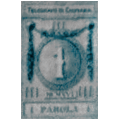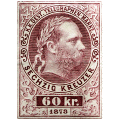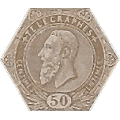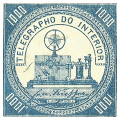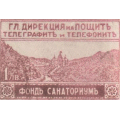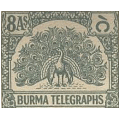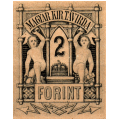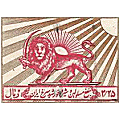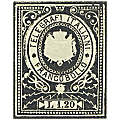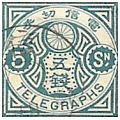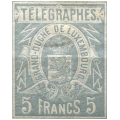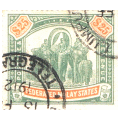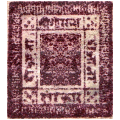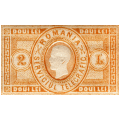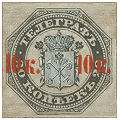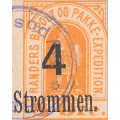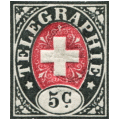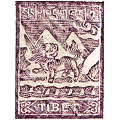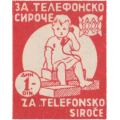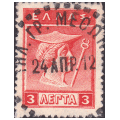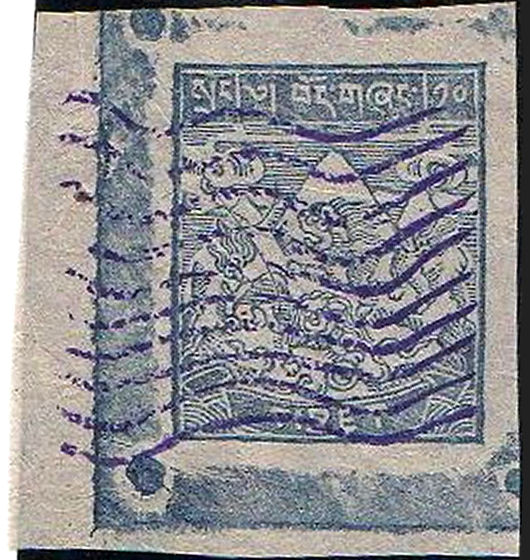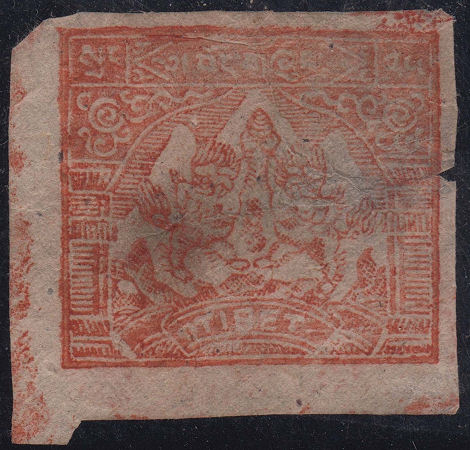| अनुवाद |
Übersetzen sie |
WORKING
|
Traduisez |
ترجم |
| перевести |
Traduca |
Traduzca |
翻译 |
|
Telegraph stamps of the World
Click here for a site-map. |
Select currency. Default = GBP (1.0)
|

I have brought these prices up to date and added currency selection.
CheckList Setup |
TIBET.
Steve Hiscocks wrote in 1982:
The so-called 'wireless-telegraph' or 'radio telegraph' stamps of Tibet present a problem in that there is no agreement on whether they were ever genuinely used or whether they are spurious and created only to raise money from collectors. There is evidence pointing in both directions. They appeared around 1950 in the denominations listed below. All depict a Tibetan lion (a pair of them in the case of the top value) against mountain peaks and have 'Tibet' in English at the bottom and 'Tibetan Government' in Tibetan characters at the top. The values are given at the top in Tibetan. They may be found 'used' on cover in complete sets (rare), and mint or used as singles, pairs, or complete sheets of four. Cancellation is usually with seven wavy lines (what collectors in the USA call 'dunes') in blue, purple or black.
They were reportedly used to prepay wireless telegraph messages between stations at Lhasa, Shigatse, Gyamda, Gartok, Chamdo and Nakchu Kha (otherwise identified as Hei-ho, about 125 miles north of Lhasa).
A Mr W. Dennis Way (Western Stamp Collector, 10 July, 1954) reported that his correspondent in Tibet, "who until recently was an extremely important official in the Telegraph Department" stated that the stamps were unknown to him and his colleagues but did not say what, if anything, was used. On the other hand a Mr Robert Ford, an Englishman employed in the Tibetan wireless system, referred in his book "Captured in Tibet" to every telegram and call having to be recorded and backed with receipt and cancelled stamp. He did not, however say what sort of stamp. In my view the balance of evidence is slightly in favour of these stamps being genuine but the collector must make his own decision.
The use of these stamps (if any!) is presumed to have ceased after the occupation of Tibet by the Chinese in 1951.
|
My note:
An added confusion factor is the abundant 'reprints' / modern forgeries that are available.
Some of the shades listed by Hiscocks seem only to exist as these.
The stamps depict Snow Lions, a National Symbol of Tibet which is entirely fictional, though Tibetan Mastiffs would make a good substitute.
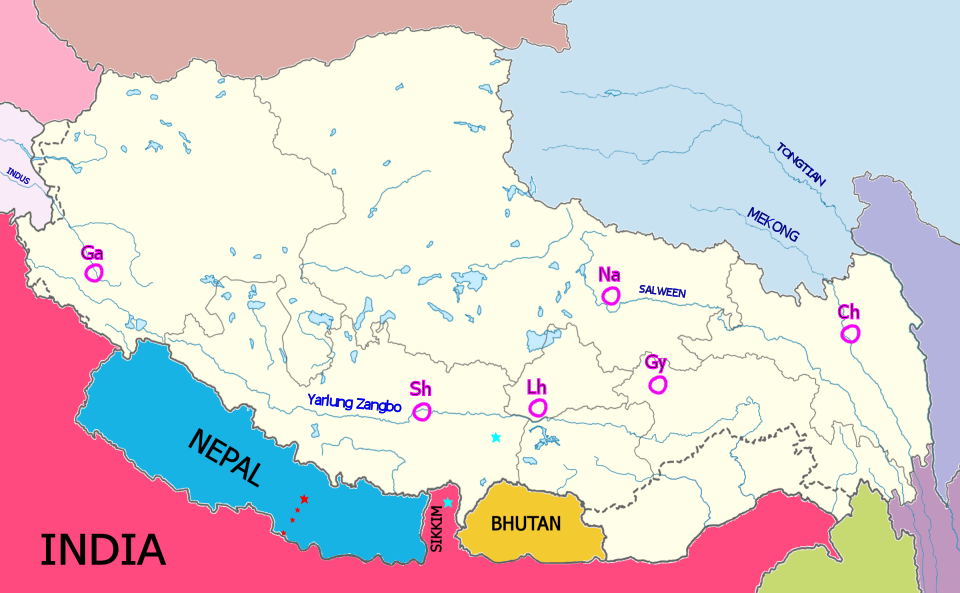 |
This is an attempt to show the approximate locations of the known stations.
They all fall inside what is now the Tibet Autonomous Region.
Drawing border lines as of the 1940's is complicated by maps often being undated and some borders being disputed. No offence to anyone is intended.
Names are also problematic as places have Tibetan names and Chinese names which may be rendered in current pinyin, old pinyin or Tibetan pinyin.
In addition to this, rivers often flow through several countries in which they are called by different names. I have labelled one as the
Mekong, but
this has many other names such as the Lancang river. The Yarlung Zangbo is known in India as the Brahmaputra.
The Salween is also called the Nu or Nujiang (with jiang, 江 meaning river) |
|
|
| Country colour key |
|---|
| |
Tibet Autonomous Region (西藏自治区). |
| |
Ladakh (part of Jammu & Kashmir) |
| |
Aksai Chin (then part of Jammu & Kashmir) |
| |
Xinjiang (新疆 ≈ New frontier) |
| |
Amdo, now part of Qinghai Province, China |
| |
Now Sichuan Province, China. Was part of Kham |
| |
Yunnan Province, China |
| |
Burma, now called Myanmar |
|
1949 or 1950 Printed in sheets of four on very rough greyish-buff native paper of variable thickness.
No watermark, no gum. Imperf.
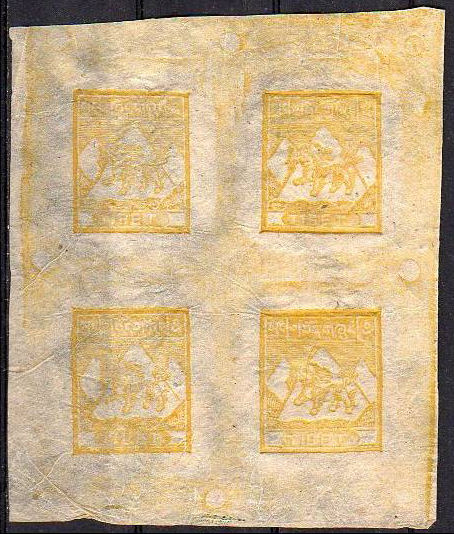 |
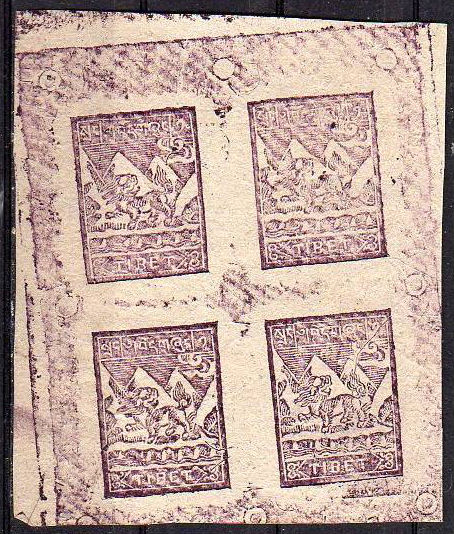 |
| Tibet sheetlet of H1 |
Tibet sheetlet of H2 |
| Images courtesy Ed Boers |
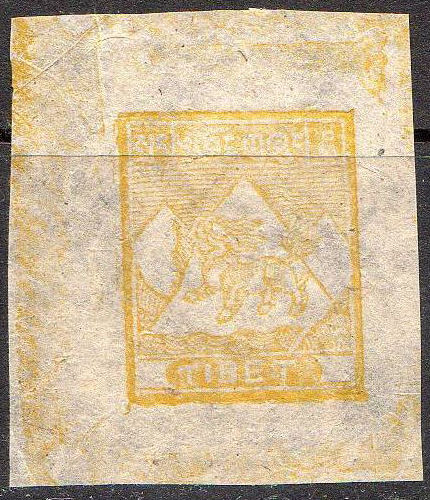 |
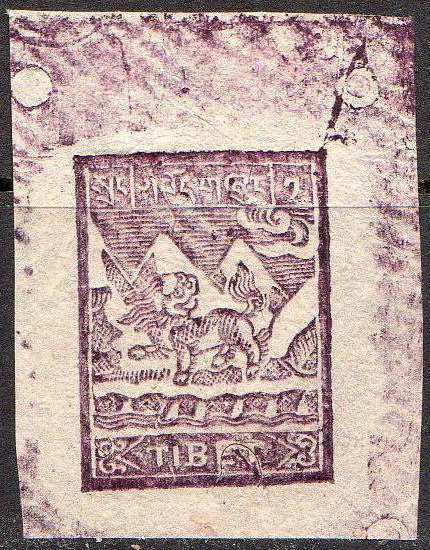 |
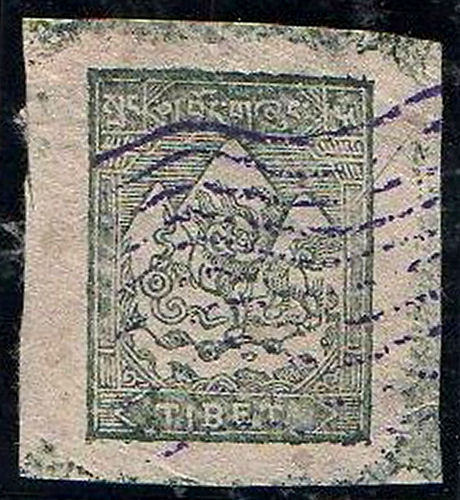 |
| Type 1 - ½ sang |
Type 2 - 1 sang |
Type 3 - 5 sang |
| Images courtesy Ed Boers |
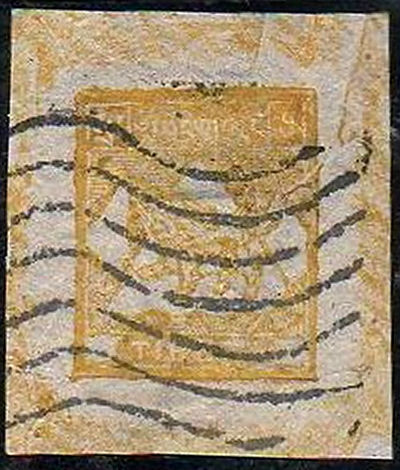 |
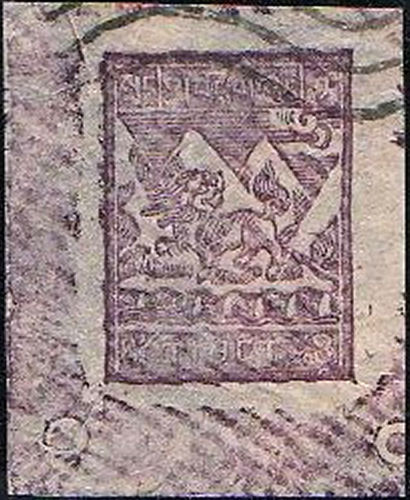 |
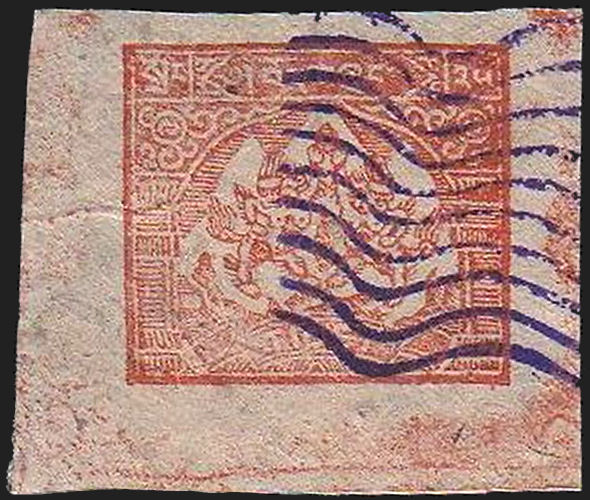 |
| Type 1 - ½ sang |
Type 2 - 1 sang |
Type 5 - 25 sang |
| Three more used examples, courtesy of Ed Boers |
| Hisc. |
Type |
Description |
Mint |
Used |
| H1 |
1 |
½ sang, yellow to orange yellow |
18.00 |
18.00 |
| *H1a |
|
olive green |
48.00 |
48.00 |
| H1b |
|
sheet of 4 |
80.00 |
80.00 |
| H2 |
2 |
1 sang, purple (shades) |
16.00 |
16.00 |
| *H2a |
|
carmine |
60.00 |
60.00 |
| H2b |
|
sheet of 4 |
75.00 |
75.00 |
| H3 |
3 |
5 sang, deep blue green |
75.00 |
75.00 |
| H3a |
|
pale sea green |
100.00 |
100.00 |
| H3b |
|
sheet of 4 |
600.00 |
600.00 |
| H4 |
4 |
10 sang, blue (shades) |
47.00 |
47.00 |
| *H4a |
|
purple |
60.00 |
60.00 |
| H4b |
|
sheet of 4 |
200.00 |
200.00 |
| H5 |
5 |
25 sang, vermilion |
25.00 |
25.00 |
| H5a |
|
brownish red |
30.00 |
30.00 |
| H5b |
|
sheet of 4 |
120.00 |
120.00 |
* I have it on good opinion that these do not exist other than as modern reproductions/forgeries.
H3, the 5 sang is normally found with narrow margins. Wide margins are scarce and worth a premium.
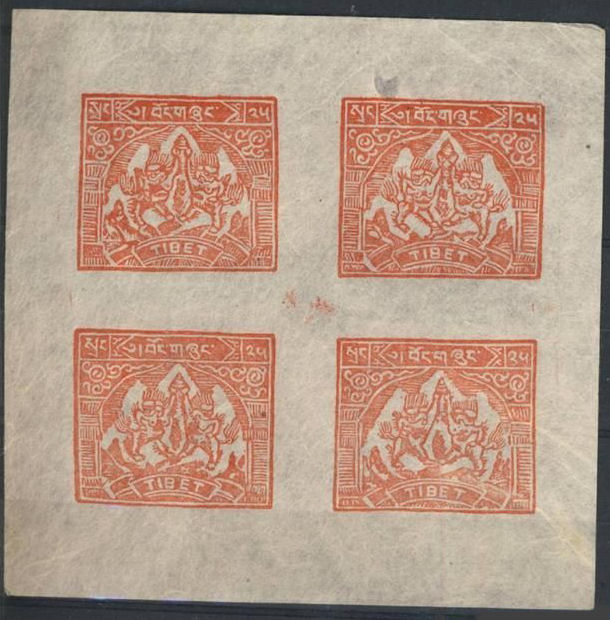 |
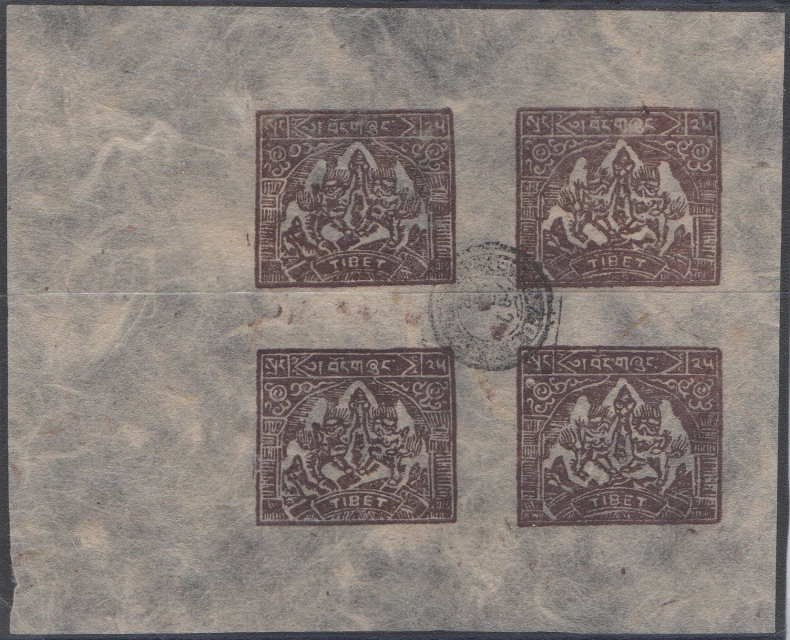 |
| This is a modern fake of a sheet of the 25 sang. note the lack of colour around the edges and nail marks. |
A similar one in brown, with a nice neat CDS in the modern remainder style. Courtesy of Les Bottomley. |
If anyone can provide scans to help with this, I am happy to give appropriate credit.
Comments, criticisms, information or suggestions are always welcome.

Please include the word 'Telegraphs' in the subject.
Last updated 2nd. September 2023
©Copyright Steve Panting 2012/13/14/15/16/17/18/19/20/2122/23 except where stated.
Permission is hereby granted to copy material for which the copyright is owned by myself, on condition that any data is not altered and this website is given credit.


